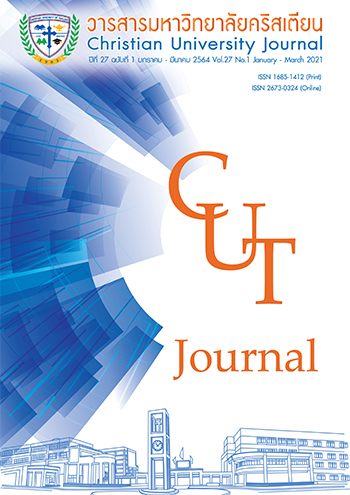ผลการฝึกชิกง ไท้จี๋และโยคะที่มีต่อการทรงตัวและสมรรถภาพทางกายในหญิงสูงอายุ
คำสำคัญ:
การฝึกชิกง-ไท้จี๋-โยคะ, หญิงสูงอายุ, การทรงตัว, สมรรถภาพทางกายบทคัดย่อ
การวิจัยในครั้งนี้มีวัตถุประสงค์เพื่อศึกษาผลการฝึกชิกง ไท้จี๋และโยคะ8 สัปดาห์ที่มีต่อการทรงตัวและสมรรถภาพทางกายในหญิงสูงอายุ กลุ่มตัวอย่างเป็นอาสาสมัครหญิง 32 คน อายุ 60 – 78 ปี ทำการสุ่มเพื่อแบ่งกลุ่มเป็น 2 กลุ่มเท่าๆ กัน กลุ่มทดลอง (QTY) ทำการฝึกชิกง ไท้จี๋และโยคะตามโปรแกรมซึ่งประกอบไปด้วยการฝึกชิกง ไท้จี๋ และโยคะ กิจกรรมละ 20 นาที รวม 60 นาที 2 ครั้งต่อสัปดาห์ แต่กลุ่มควบคุม (C) ไม่ได้รับการฝึก ทำการทดสอบการทรงตัวและสมรรถภาพทางกายด้านความยืดหยุ่นของลำตัว ความยืดหยุ่นของหัวไหล่ ความแข็งแรงของขา และความจุปอด ผลการวิจัย พบว่า หลังการฝึกสัปดาห์ที่ 8 การทรงตัว ความยืดหยุ่นของลำตัวและไหล่ขวา และความจุปอดของกลุ่มทดลองดีกว่ากลุ่มควบคุมอย่างมีนัยสำคัญทางสถิติ (p<0.05) นอกจากนั้น การเปรียบเทียบภายในกลุ่มทดลองพบว่า ทุกตัวแปร หลังการฝึกสัปดาห์ที่ 8 ดีกว่าก่อนการฝึก สรุปได้ว่า การฝึกออกกำลังกายด้วยชิกง ไท้จี๋และโยคะ 8 สัปดาห์ ช่วยพัฒนาการทรงตัวและสมรรถภาพทางกายของหญิงสูงอายุได้
เอกสารอ้างอิง
ประสิทธิ์ รัตนวงศาโรจน์. (2551). ไท้เก๊ก 24 ท่า เพื่อสุขภาพ.กรุงเทพฯ: เอ็มไอเอส.
ประสิทธิ์ รัตนวงศาโรจน์. (2553). ชี่กง 18 ท่า เพื่อสุขภาพ. กรุงเทพฯ: เอ็มไอเอส.
มูลนิธิสถาบันวิจัยและพัฒนาผู้สูงอายุไทย. (2560). สถานการณ์ผู้สูงอายุไทย พ.ศ. 2559.นครปฐม : พริ้นเทอรี่.
รุ่งกานต์ แซ่แต้, สาลี่ สุภาภรณ์ และประสิทธิ์ ปีปทุม. (2561). ผลการฝึกชิกงร่วมกับโยคะที่มีต่อสุขภาพและความกลัวการหกล้มของผู้สูงอายุ: การศึกษาเชิงคุณภาพ. วารสารคณะพลศึกษา, 21(2), 43-54.
วรวุฒิ ธาราวุฒิ, สาลี่ สุภาภรณ์ และอุษากร พันธุ์วานิช. (2560). โยคะบำบัดสำหรับผู้สูงอายุ: การออกแบบโปรแกรม. วารสารคณะพลศึกษา, 20(2), 83-93.
สาลี่ สุภาภรณ์. (2554). ตันเถียน – สาลี่ โยคะ. กรุงเทพฯ : สามลดา.
สาลี่ สุภาภรณ์. (2561). การเลือกออกกำลังกายของผู้สูงอายุและปัจจัยเกี่ยวข้อง: กรณีศึกษา. วารสารคณะพลศึกษา, 21(2), 11-22.
สรายุธ มงคล. (2559). ผลของการฝึกโยคะต่อการขยายตัวของทรวงอก และความแข็งแรงของกล้ามเนื้อหายใจในอาสาสมัครเพศหญิง. วารสารเทคนิคการแพทย์เชียงใหม่, 49(3), 363-369.
Ahn, S., & Song, R. (2012). Effects of tai chi exercise on glucose control, neuropathy score, balance, and quality of life in patients with type 2 diabetes and neuropathy. Journal of Alternative and Complementary Medicine, 18(12), 1172-1178.
American College of Sports Medicine.(2014). ACSM’s guidelines for exercise testing and prescription. (9th Ed.). Philadelphia: Lippicott Williams & Wilkins.
Bezerra, L. A., Melo, H. F., Garay, A. P., Reis, V. M., Aidar, F. J., Bodas, A. R., Garrido, N. D., &Oliveira, R. J. (2014). Do 12 week yoga program influence respiratory function of elderly women?.Journal of Human Kinetics, 43(1), 177-184.
Chan, A. W. K., Lee, A., Suen, L. K. P., & Tam, W. W. S. (2011). Tai chi qigong improves lung functions and activity tolerance in COPD clients: a single blind randomized controlled trial. Complementary Therapies in Medicine, 19(1), 3-11.
Eda, N., Ito, H., Shimizu, K., Susuki, S., Lee, E., & Akama, T. (2018). Yoga stretching for improving salivary immune function and mental stress in middle-aged and older adults.Journal of Women & Aging, 30(3), 227-241.
Hong, Y., Li, J, X., & Robinson.(2000). Balance control, flexibility, and cardiorespiratory fitness among older tai chi practitioners.British Journal of Sports Medicine, 34, 29-34.
Jarmey, C. (2003). The theory and practice of taiji qigong. London: Lotus Publishing.
Kjos, V., & Etnier, J. L. (2006). Pilot study comparing physical and psychological responses in medical qigong and walking.Journal of Aging and Physical Activity, 14(3), 241-253.
Lan, C., Chen, S. Y., Lai, J. S., & Wong, A. M. (2013). Tai chi chuan in medicine and health promotion. Evidence-based complementary and alternative medicine, 2013(502131), 1-17.
Li, J. X., Xu, D. Q., & Hong, Y.(2009). Changes in muscle strength, endurance and reaction of the lower extremities with tai chi intervention.Journal of Biomechanics, 42(8), 967-971.
Lua, C., Yu, R., & Woo, J. (2015). Effects of a 12-week hatha yoga intervention on cardiorespiratory endurance, muscular strength and endurance, and flexibility in Hong Kong Chinese adults: a controlled clinical trial. Evidence-Based Complementary and Alternative Medicine, 2015(958727), 1-12.
Manson, J., Rotondi, M., Jamnik, V., Ardern, C., &Tamim, H. (2013).Effects of tai chi on musculoskeletal health-related fitness and self-reported physical health changes in low income, multiple ethnicities mid to older adults.BMC Geriatrics, 13, 114.
Osness, W. H., Adrian, M., Clark, B., Hoeger, W., Raab, D., &Wiswell, R. (1990).Functional fitness assessment for adults over 60 years (a field base assessment).Virginia: AAHPERD Publication.
Wang, C., Li, K. G., Choudhury, A., & Gaylord, S. (2019). Trends in yoga, tai chi and qigong use among US adults, 2002 – 2017. American Journal of Public Health, 109(5), 755-761.
Yu, D. H., & Yang, H. X. (2012). The effect of tai chi intervention on balance in older males. Journal of Sport And Health Science, 1(1), 57-60
ดาวน์โหลด
เผยแพร่แล้ว
ฉบับ
ประเภทบทความ
สัญญาอนุญาต
ลิขสิทธิ์ (c) 2021 มหาวิทยาลัยคริสเตียน

อนุญาตภายใต้เงื่อนไข Creative Commons Attribution-NonCommercial-NoDerivatives 4.0 International License.



